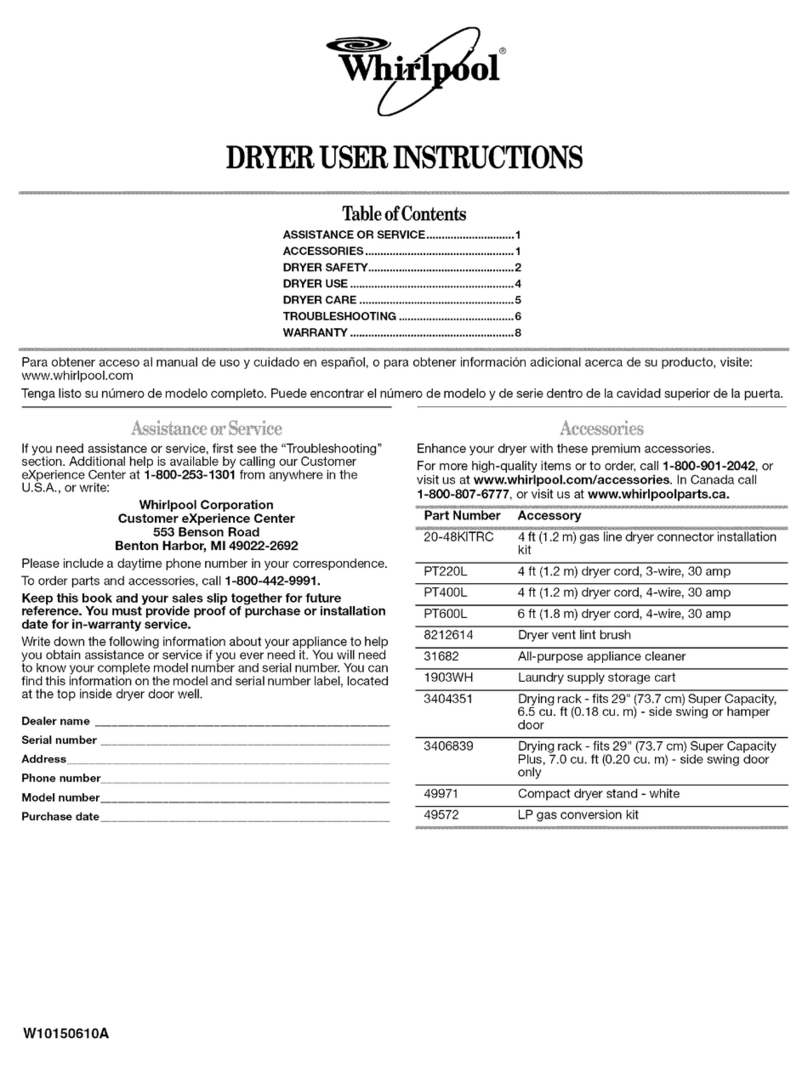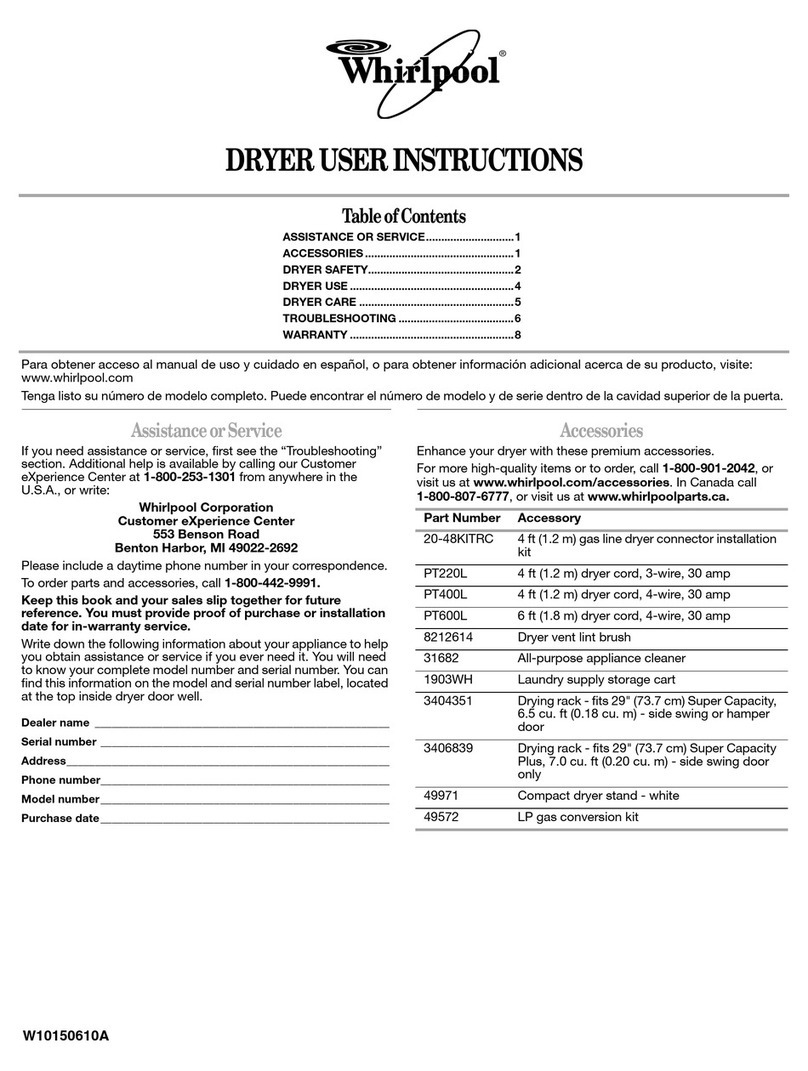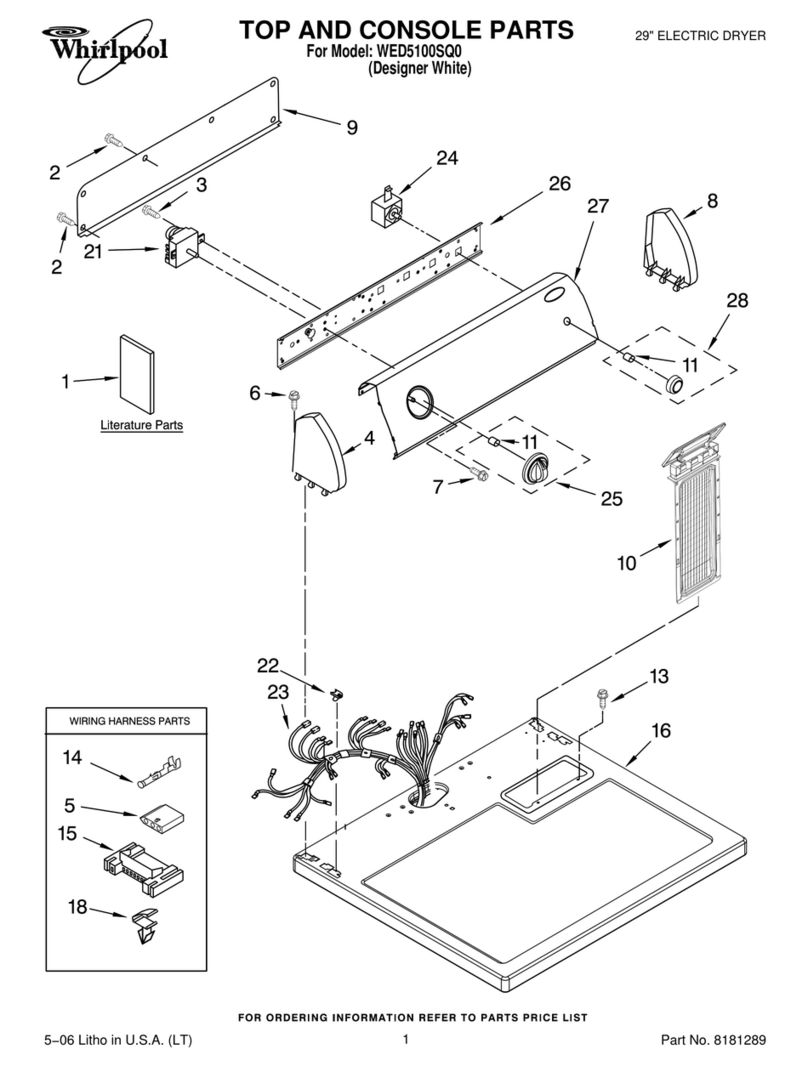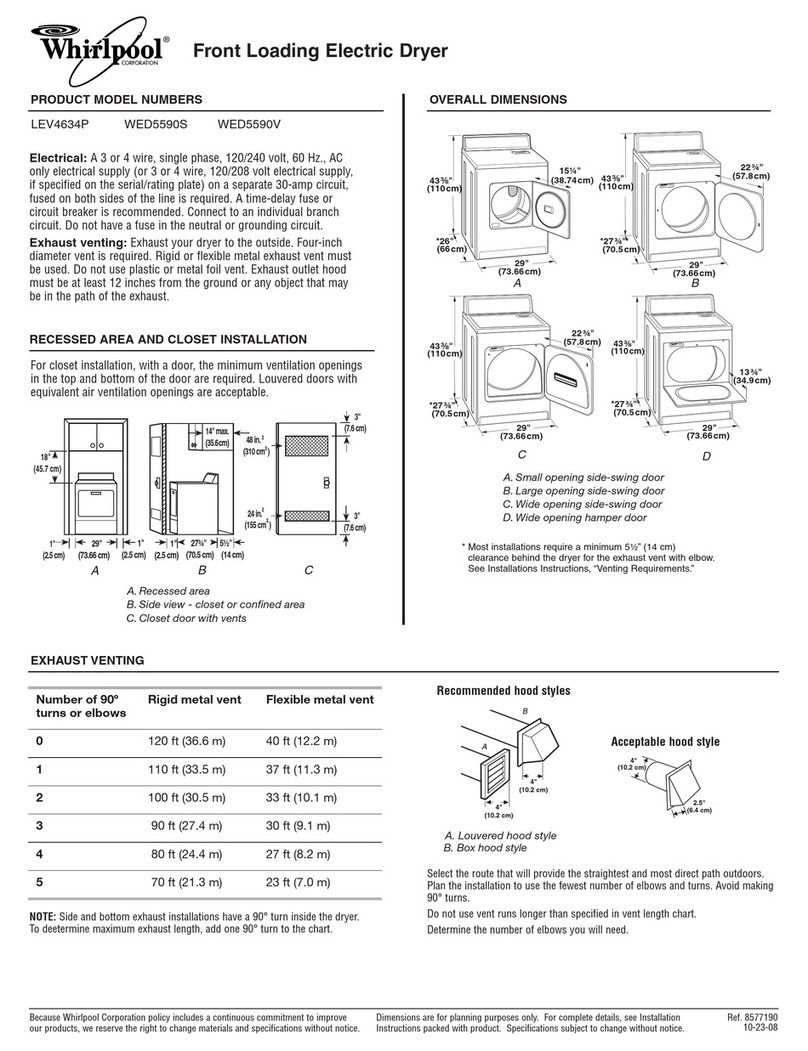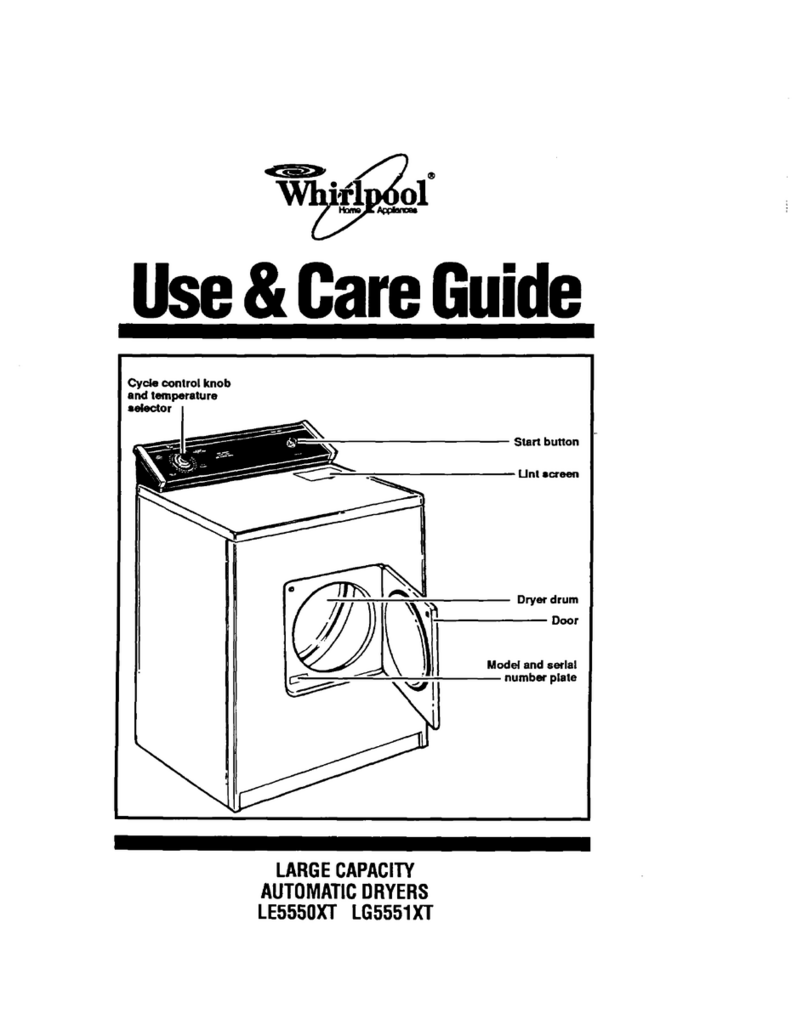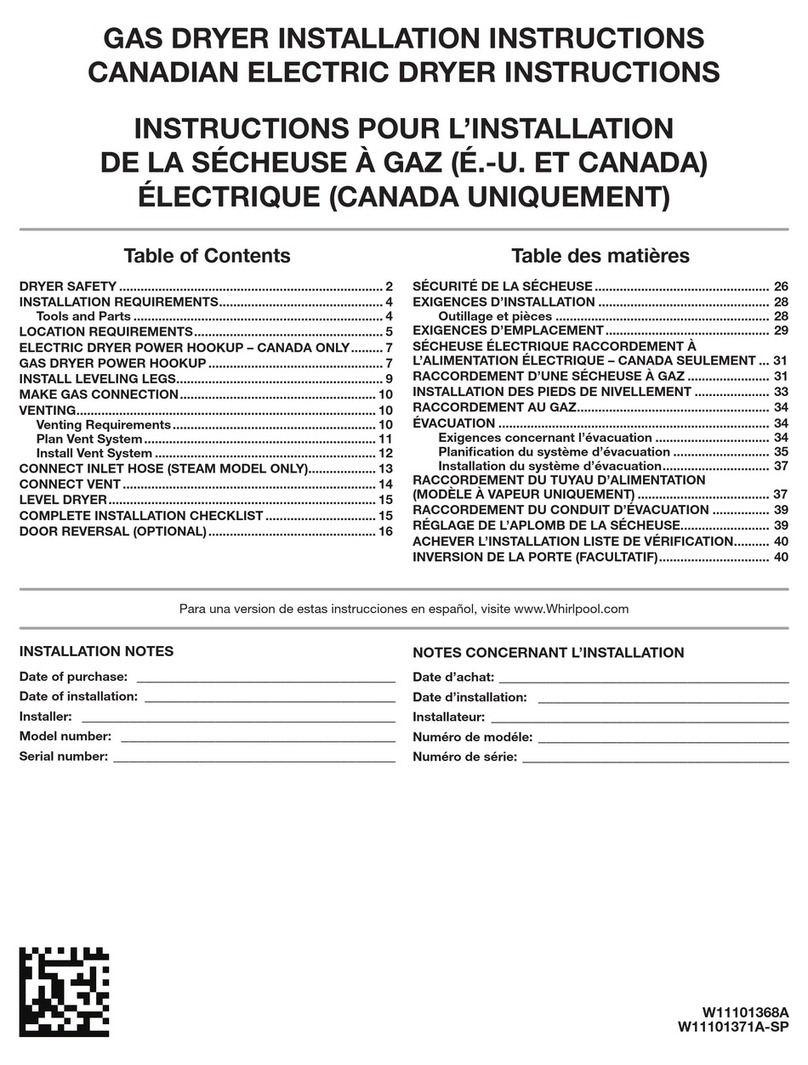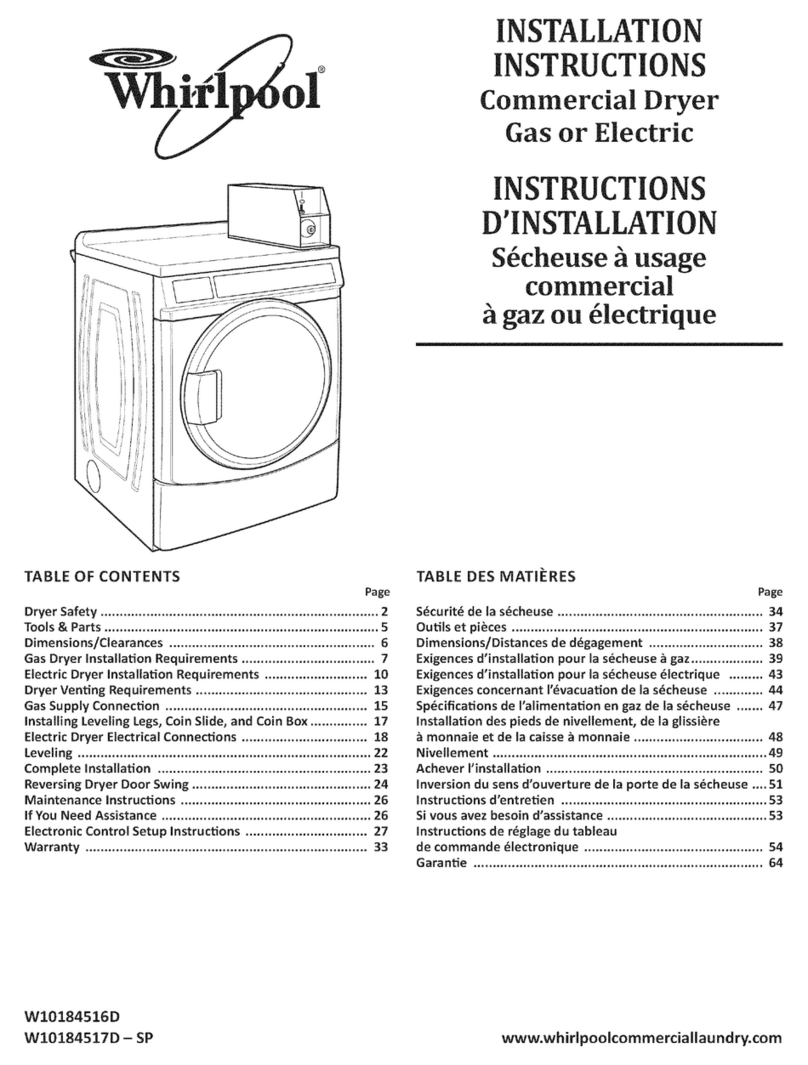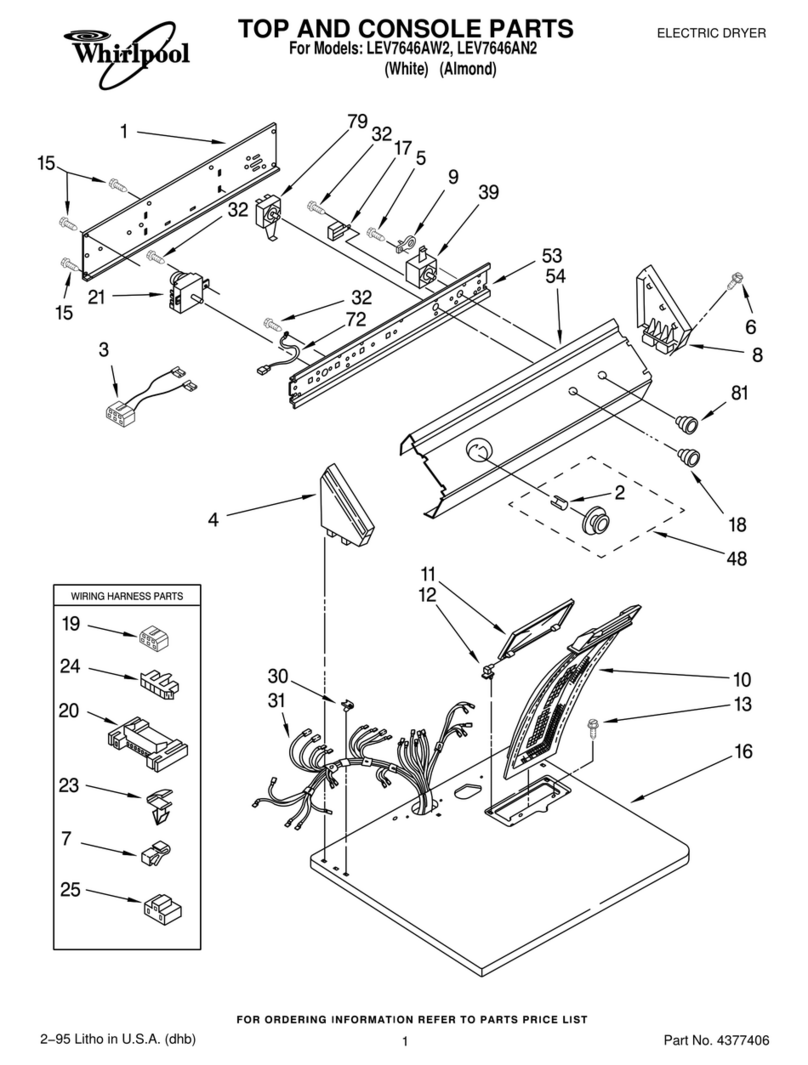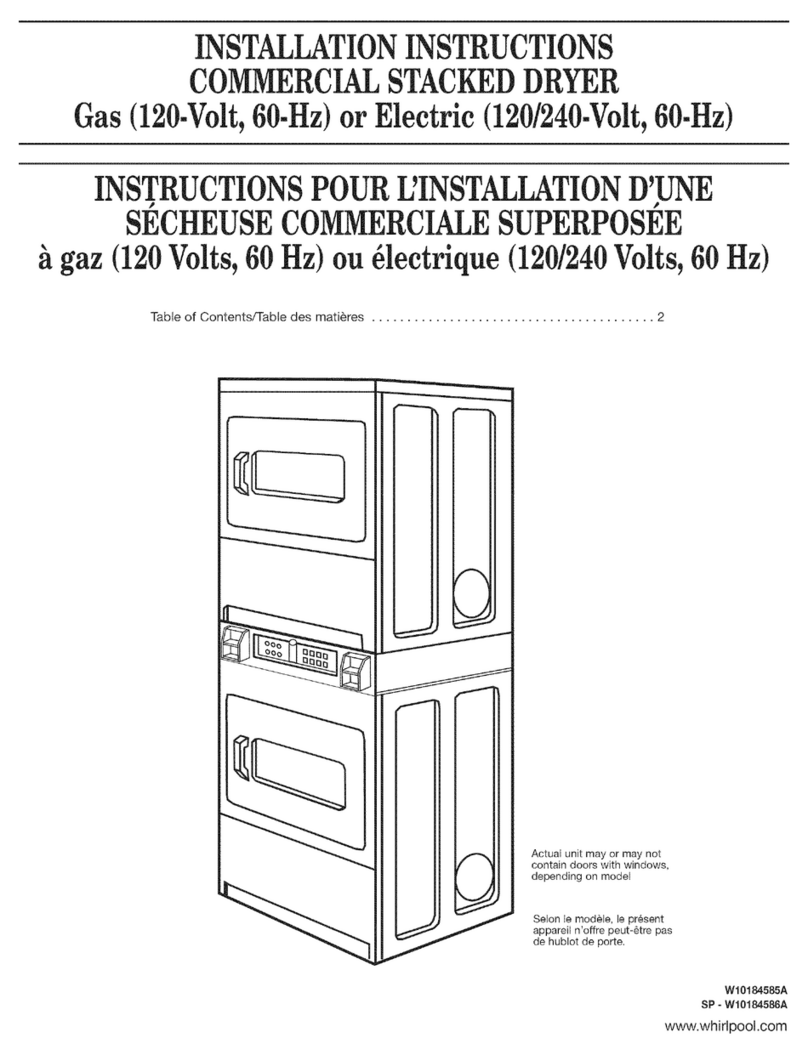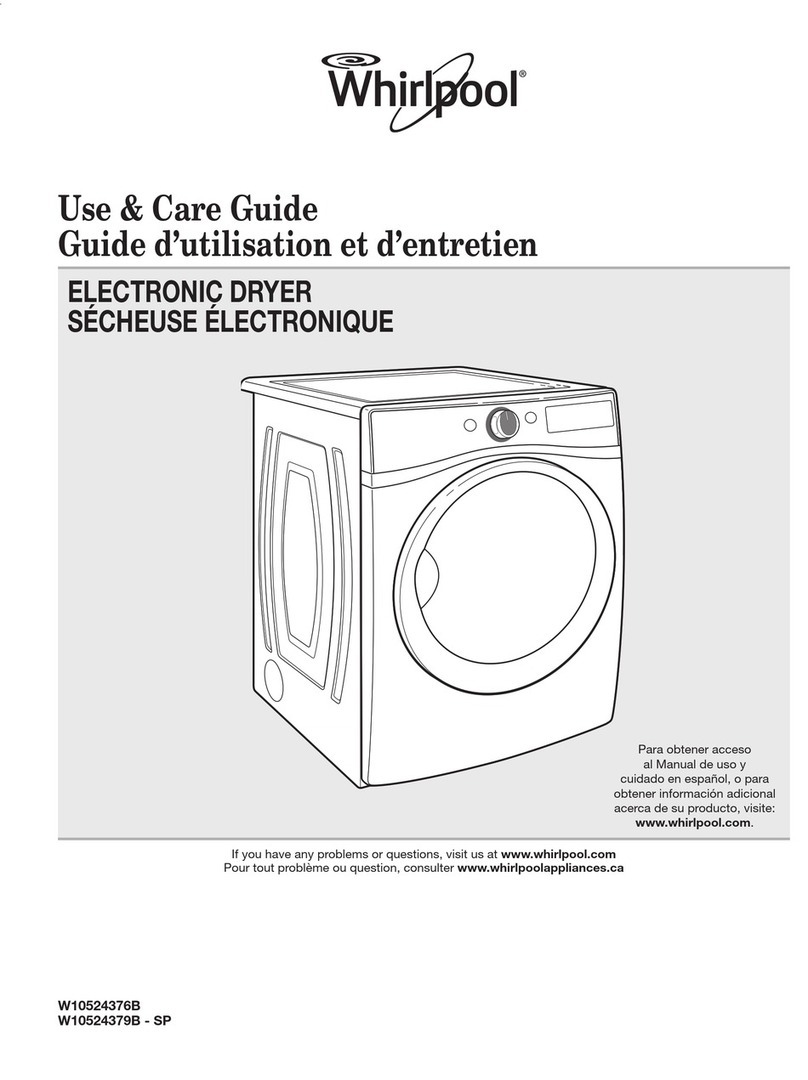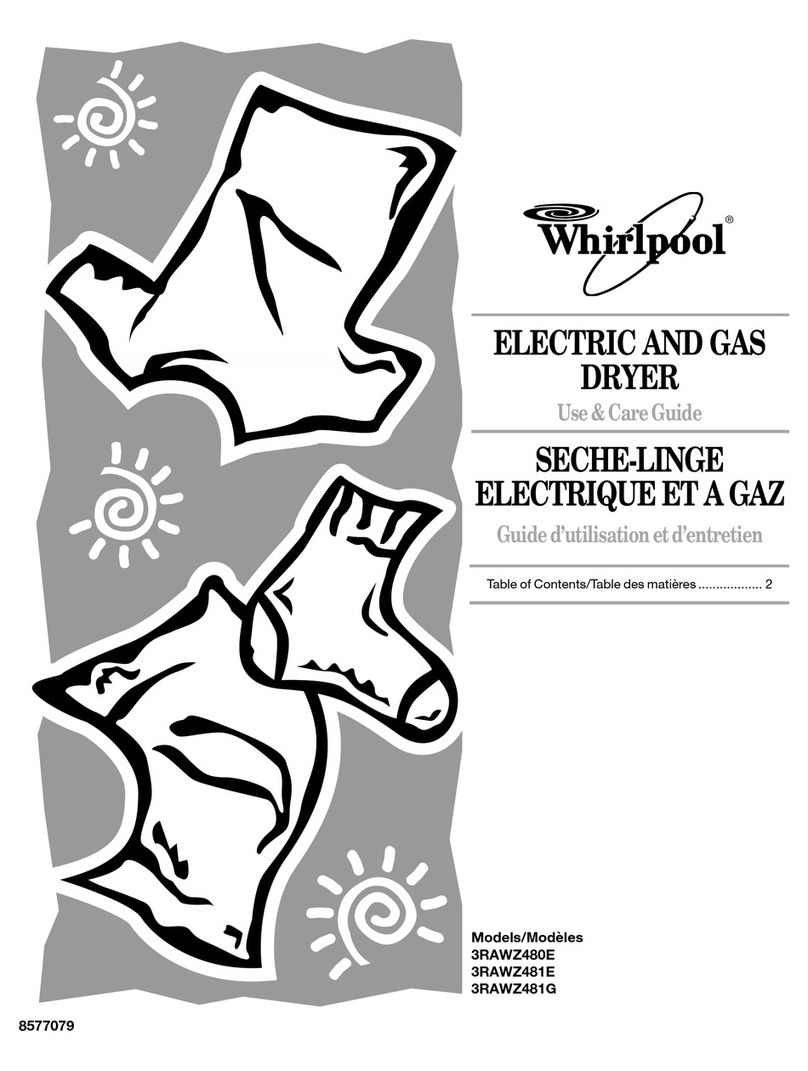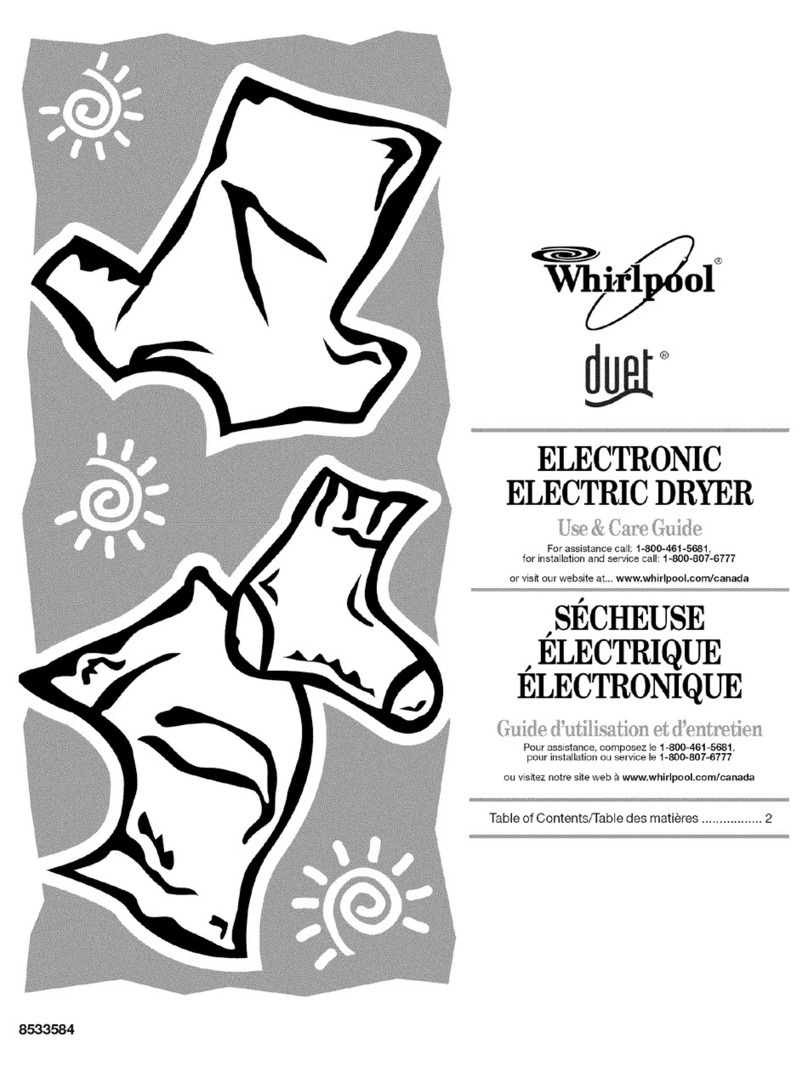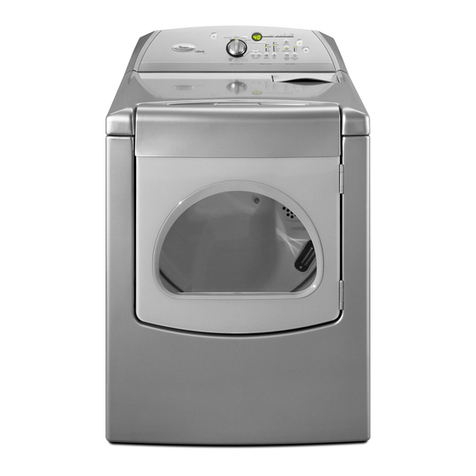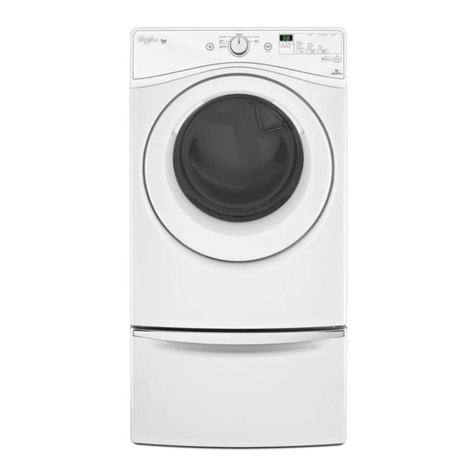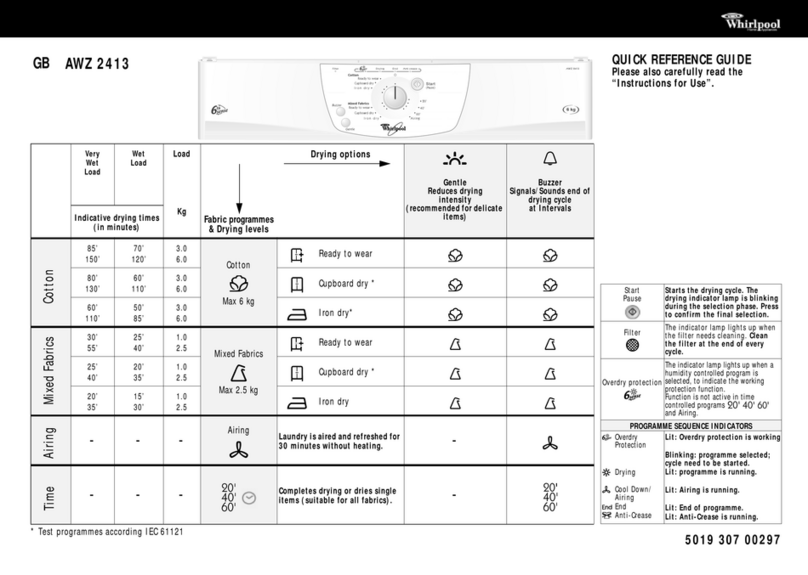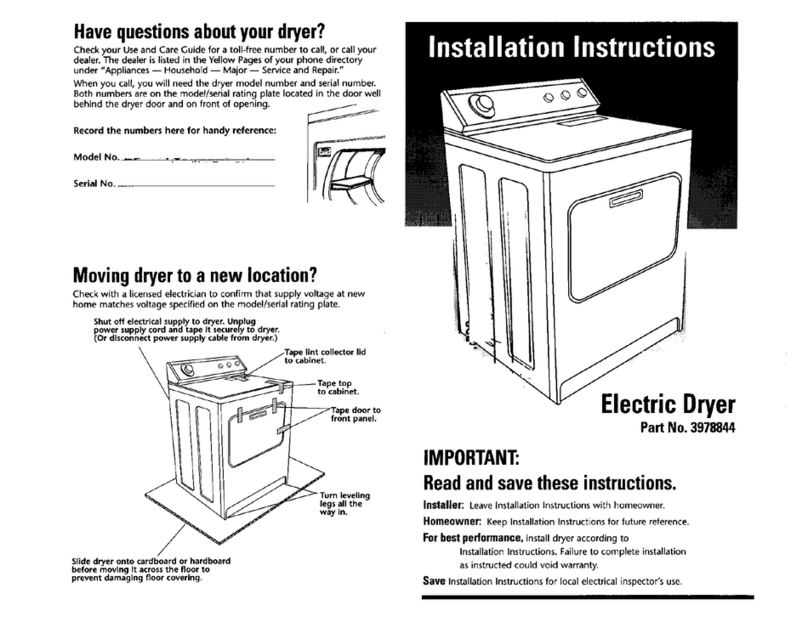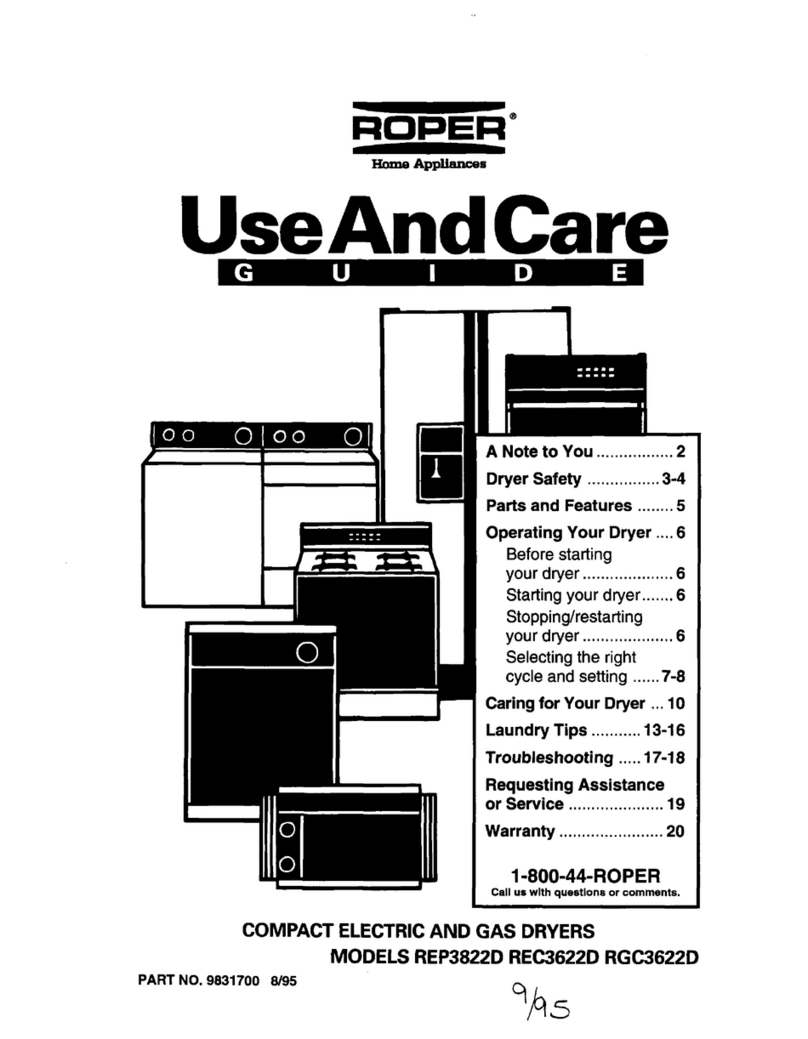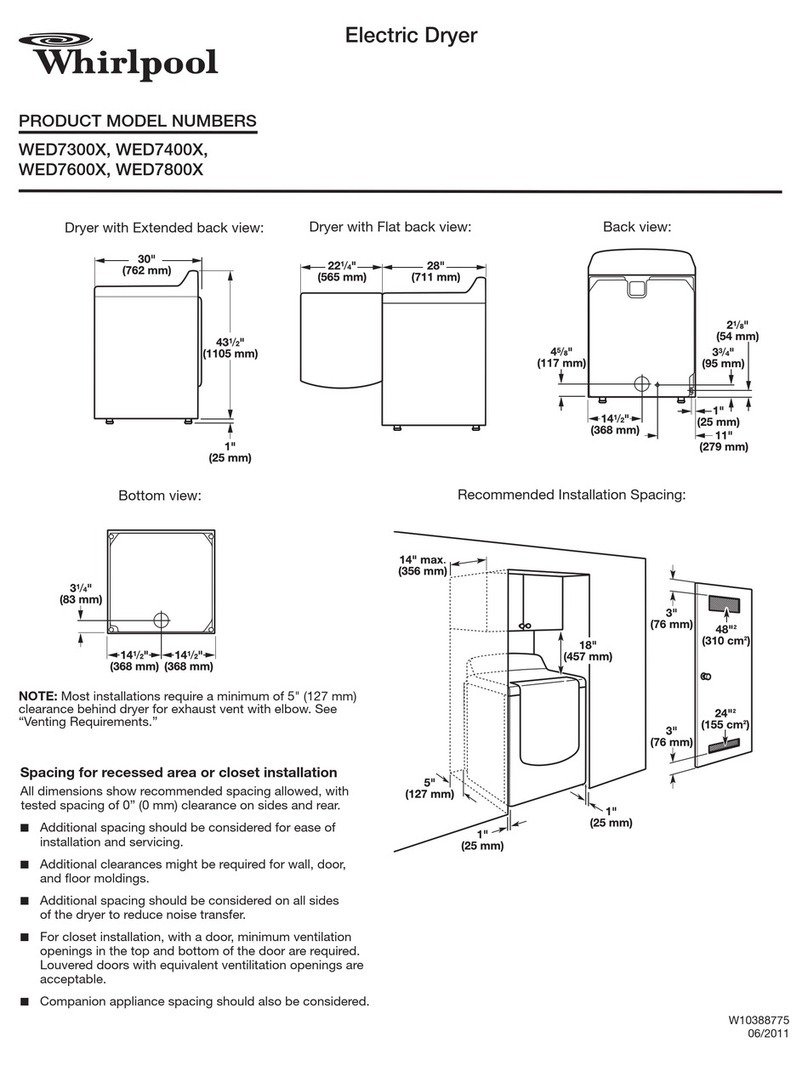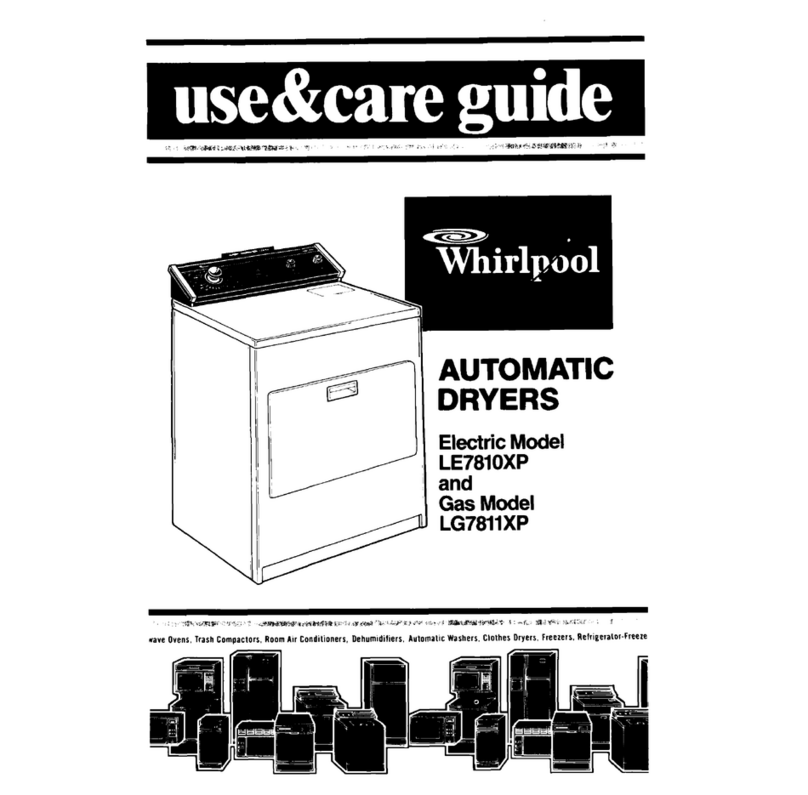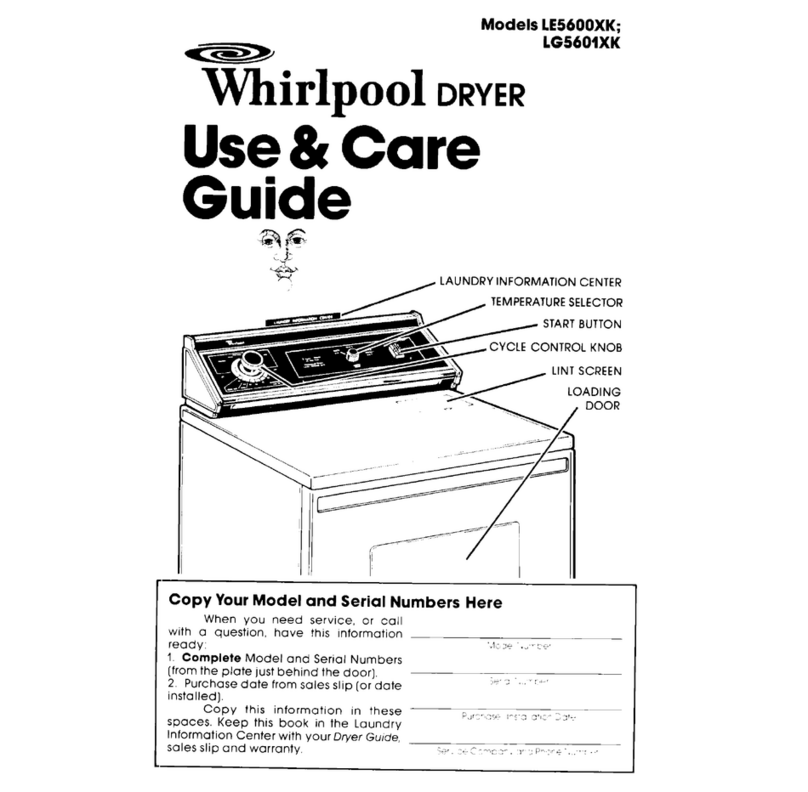Exhaust
requirements
Fire/Health Hazard
l
Do Not use non-metal, tlexlble duct.
l
Do Not use metal duct smaller than
tour Inches In diameter.
l
Do Not use exhaust hoods wlth
magnettc latches.
. Check that exhaust system Is not
longer than specltled. Exhaust systems
longer than specltled will:
- Accumulate Ilnt.
- Shorten the llte of the dryer.
- Reduce pertormance, resulting In
longer drylng times and Increased
energy usage.
Failure to tallow speclflcatlons may
result In a flre.
l
Do Not exhaust dryer Into a chimney,
tumace cold alr duct, attlc or crawl
space, or any other duct used for
ventlng.
l
Clean the exhaust system every other
year.
l
Do Not Install flexible duct In enclosed
walls, celllngs or floors.
Accumulated llnt could be fuel for a flre
or cause molsture damage.
Exhaustlng your dryer Indoors Is Not
recommended. The molsture and llnt
Indoors may cause:
- Lint to gather lnslde and around the
dryer and be a fuel ror tlre.
- Moisture damage to woodwork,
turnlture, palnt, wallpaper, carpet,
etc.
- Housecleanlng problems and
possible health problems.
Failure to follow these lnstructlons could
result In flre damage, property damage,
personal Injury or health problems.
It uslng an exlstlng exhaust system, clean llnt
tram entire length ot exhaust system. Make
sure exhaust hood Is not plugged wlth Ilnt.
Replace plastic exhaust duct wlth rlald metal
or iiexlbki metal duct.
LJseduct tape
to seal
all joints.
Four-Inch rlgld metal pipe
is preferred. Plan
installation to use the fewest number of
elbows and turns.
better l-l PI
Metal tlexlble duct
must be fully extended
and supported when the dryer is in its final
position. DO NOT KINK OR CRUSH THE DUCT.
The metal flexible duct must be completely
open to allow adequate exhaust alr to flow.
Allow as much room as possible when using
elbows or making turns. Send duct gradually
to avoid kinking. Remove excess flexible
duct to avoid -
sagging and kinking
that may result in
reduced air flow.
Exhaust outlet
is
located at the center
of the bottom dryer
back.
The
exhaust duct
can
be routed up, down,
left, right or straight
out the back of the
dryer. General space
requirements are
provided on Panel E.
Use the straightest
path you can, where
possible, to avoid 90”
turns.
Maxlmum length
of the exhaust system
depends upon the type of duct used,
number of elbows and the type of exhaust
hood. The maxlmum length for both rlgid
and flexible duct is shown in chart.
g”gR
TURNS
MHA
64 Fr.
54Fr.
MFT.
35 Fr.
27 FT.
36 Fr.
31 n.
27 FI.
25 Fr.
23 FT.
1 HOOD TYPE I
The maximum length using a 2”
x 6” rectan
with
2 elbows and a 2- l/2
3
uiar duct
(I’YPE C) exhaus hood
IS 8 ft.
?!!Y!!L
g
ff
2-l/2”
64 Fr. ii:. MAX.
54 Fr.
44 FT. 30 n: LEN%TH
35 Fr.
29 FI.
27 n. 21 Fr. gpic
DUCT
36 Fr. 20 FT. MAX.
31 FT. 23 FI. LENGTH
27 FT. 19Fr.
25 FT. 17FT. ~~%iA~
23 FI. 15 Fr. METAL
DUCT
For exhaust systems
not covered by the
exhaust length chart, check with your dealer
or distributor for information.
Service check:
The back pressure in any
exhaust system used must not exceed 0.6
inches of water column measured with an
inclined manometer at the point that the
exhaust duct connects to the dryer.
Exhaustlng the dryer outslde
is
recommended. A closet installation
must
be
exhausted Recessed installation
that is not exhausted outside must use
Exhaust Deflector Part No. 603197 available
from your dealer. See ‘Recessed and closet
installation instructions”, Panel E, for
adequate unobstructed air opening
requirements.
It the dryer Is Installed In a contlned area
such as a bedroom, bathroom, or closet,
it
must be exhausted to the outside and
provision must be made for enough air for
combustion and ventilation, Check
governing codes and ordinances, Also refer
to the ‘Recessed and closet installation
instructions, * Panel E.
An
exhaust hood
should cap
the exhaust duct to prevent
exhausted air from returning
into dryer. The outlet of the
hood must be at least 12
inches from the ground or
any object that may be in the
path of the exhaust.
Four-Inch outlet exhaust
%I
12”
minimum
hood
is preferred. However,
a 2-l/2-inch outlet exhaust hood may be
used. A 2-l/2-inch outlet exhaust hood can
result in longer drying times than other hood
types.
For permanent Installation, a statlonary
exhaust system Is required.
Mobile home installation
This appliance is suitable for mobile home
installations. The installation of the dryer must
conform to the Manufactured Home
Construction and Safety Standard, Title 24
CFR, Part 3280 (formerly the Federal
Standard for Mobile Homes Construction
and Safety, Title 24, HUD Part 280, 1975) or
the latest edition.
Moblle home exhaust requlrements:
The
dryer
must
have an outside exhaust. If the
dryer is exhausted through the floor and the
area under the mobile home is enclosed,
the exhaust system
must
terminate outside
the enclosed area. Extension beyond the
enclosure will prevent lint and moisture
buildup under the mobile home.
Now start...
With dryer in laundry area.
1
at front corners, remove t
2
n
Open dryer and remove literature
and parts packages. If your dryer has tape
on the door, remove tape, open door and
remove the rest of the tape from dryer drum.
Remove drying rack if your dryer has one.
Remove parts from packages, Check that
all four leveling legs were included (see
Panel A).
3
n
If your dryer drum was taped. move
drum counterclockwise to make sure all
tape was removed. Wlpe the interior of the
drum thoroughly wlth a damp cloth to
remove any dust before using the dryer.
4
n
Take two of the cardboard corners
from the carton and place them on the floor
in back of the dryer.
5
n
Firmlv arasp the body of the dryer
and gently iay it on its back’on the
cardboard comers,
6
fl Wlth one of the legs in hand,
check the ridges for a diamond marking.
That’s how far the leg is supposed to go into
the hole.
n
Start to screw the legs into the holes
by hand. Use a 1” socket wrench or other
type wrench to finish turning the legs until
you reach the diamond marking.
Slide dryer onto cardboard or hardboard
betore movlng across rloor.
Failure to do so may cause damage to
8
n
Now stand the dryer up. Slide dryer
onto cardboard or hardboard.
Panel D
